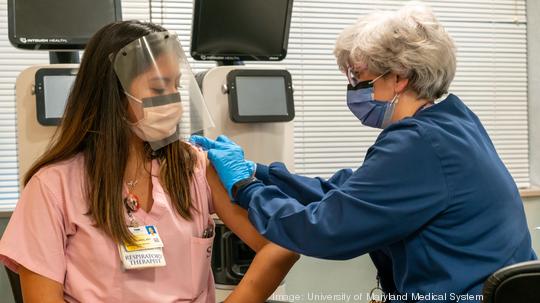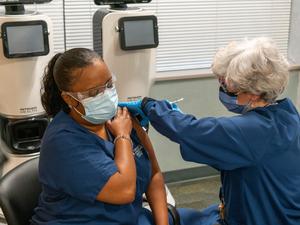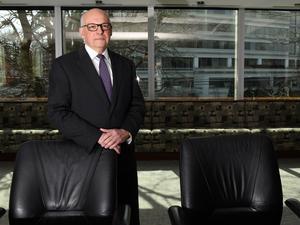
The first batches of the Covid-19 vaccine have landed in Greater Washington. Early available doses are limited and experts expect it will be that way for many more months. So the question is: Who gets them first?
Researchers at the Johns Hopkins Bloomberg School of Public Health have developed an online tool that can help — a calculator that estimates individual and community-level mortality risk, or risk of dying, from Covid-19. The tool determines the mortality risk of individuals who are currently uninfected, based on certain personal factors and community spread data from the individual's home state. It helps determine who within an organization may be at the highest risk of future infection or of complications after infection.
The team that developed the risk calculator expects it will be useful in identifying who within certain organizations or communities falls into a high-risk population, and should be prioritized to receive the limited doses of vaccines as they become available. The calculator was presented in a paper published on Dec. 11 in the journal Nature Medicine.
Kevin Sowers, president of the Johns Hopkins Health System, recently said his organization is using the tool to determine how best to distribute the initial 975 vials of Pfizer's and BioNTech's Covid-19 vaccine it will receive across the system's six hospitals and 35,000 employees.
Hopkins has made the tool available online for use by public health officials, employers, universities and anyone else who might be curious to determine their risk of infection. It is available here.
The algorithm behind the calculator makes use of existing study data on Covid-19 to estimate mortality based on a person's age, gender, health conditions, location and other factors. The calculated risks — ranging from lower than average risk, to very high risk — can be applied to individuals in the general population who are currently uninfected, and captures factors associated with the likelihood of future coronavirus infection as well as complications after infection.
Nilanjan Chatterjee, a professor of biostatistics and genetic epidemiology at Hopkins, has previously developed models to determine individuals' risk of being diagnosed with non-communicable diseases, like cancer, based on factors like their environment, demographics and genetics. Like many researchers, he shifted his focus and developed the study and risk model behind the calculator along with Neha Agarwala, a statistics graduate student from the University of Maryland, Baltimore County, and Hopkins postdoctoral fellows Jin Jin and Prosenjit Kundu. Benjamin Harvey, the lead data scientist for Chatterjee's laboratory, built the web tool.

